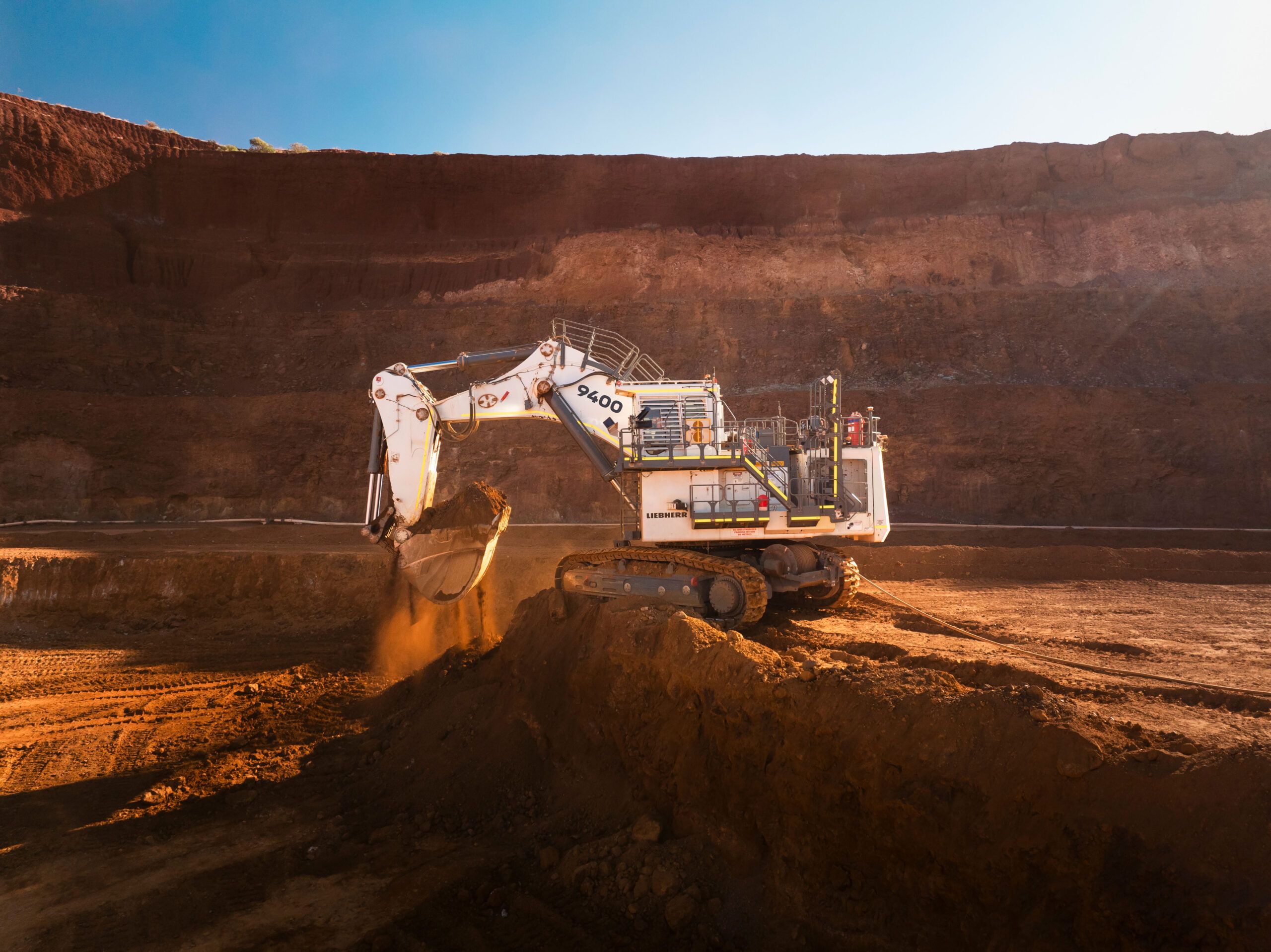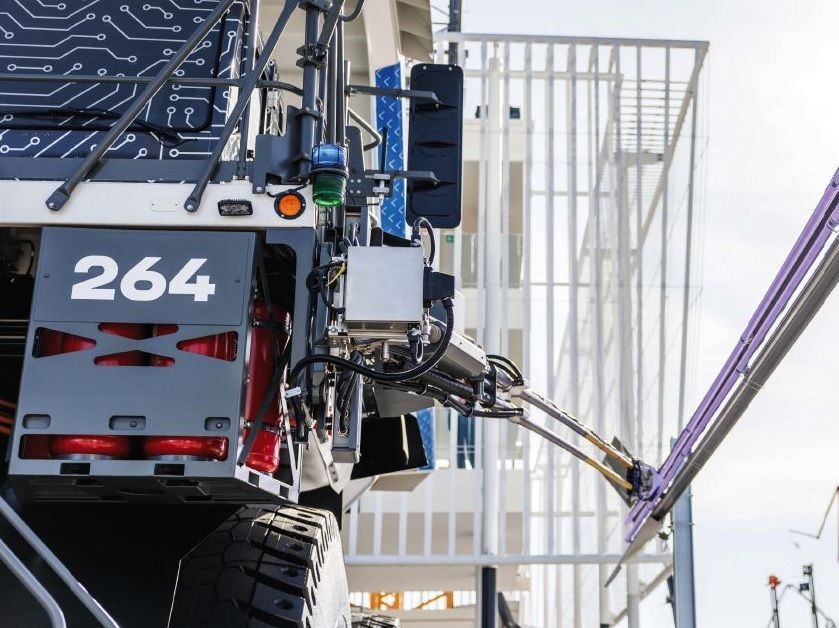Liebherr’s take care of Australian mining big, Fortescue is making a fleet of big, zero-emission electrical autos designed to get rid of carbon emissions from operations by the top of the last decade
Massive autos have lengthy been thought of probably the most difficult to decarbonise, however a brand new partnership between Liebherr and Australian mining big Fortescue is demonstrating that large-scale electrification is just not solely doable however economically viable. At $2.8 billion the Fortescue contract is the only largest tools deal in Liebherr’s 75-year historical past and Fortescue’s largest ever contract. The partnership encompasses 475 zero-emission machines: roughly 360 autonomous battery-electric vehicles, 55 electrical excavators, and 60 battery-powered dozers.
For Fortescue, the partnership is a cornerstone of its Actual Zero goal – eliminating carbon emissions from its Australian iron ore operations by 2030. Dr Andrew Forrest, Fortescue’s government chairman, frames this as each an environmental crucial and enterprise alternative. “The world wants Actual Zero now – it can’t afford to attend,” mentioned Forrest in a presentation on the opening ceremony of Bauma in April. “The inexperienced options we’d like are right here immediately, and Fortescue Zero is supplying them and rolling them out throughout our huge mining operations.”
On the coronary heart of the partnership is the T 264 Battery Electrical inflexible mine hauler. Richard Kraemer, haulage electrification options supervisor for Liebherr, explains the mixing: “Fortescue Zero is our battery energy system provider. They make all of the sub packs and all the mandatory elements that go together with it, which we combine into our truck.”
Fortescue began creating electrification options in 2022 when it purchased Williams Superior Engineering (WAE), the battery and expertise arm of Williams Formulation One racing crew. In 2024 WAE was rebranded to Fortescue Zero, as a part of the corporate’s Actual Zero challenge.
Fortescue Zero has developed a 3.2MWh battery system to energy Liebherr’s 240-tonne capability truck, with charging by way of three distinct strategies. The primary methodology is a static fast-charging resolution, which might ship as much as 6MW of energy via an automatic robotic connection arm utilizing two Megawatt Charging System (MCS) connectors, with 30-minute quick charging capabilities.
A second charging possibility is energy switch utilizing Energy Rail, which is an evolution of confirmed trolley bar expertise. “This takes the standard advantage of trolley help, which is finished via overhead traces, however does it via a sidemounted rail,” says Kraemer. “This optimises set up time, whereas offering an environment friendly technique of energy switch to the truck.”
Lastly, the truck is provided with regenerative braking expertise. “Whereas the truck is working downhill, in a typical diesel truck, that power can be launched via braking. Now it’s captured on the onboard battery energy system,” says Kraemer.
“The world wants actual zero now – it merely can’t afford to attend”
Battery choices
Fortescue Zero has developed two battery configurations to deal with totally different operational necessities. The power capability battery capabilities “like an enormous gasoline tank,” offering longer operating instances the place charging infrastructure could also be restricted. This model requires roughly one hour to cost and provides a lifecycle of two to a few years with roughly 3,600 charging cycles.

Together with the T 264, the R 9400 E cable-powered electrical excavator is being produced as a part of the Liebherr-Fortescue partnership, with 55 machines set to be deployed
The ability battery expenses inside 12 minutes, designed for operations with available charging infrastructure. Whereas providing much less power storage, it gives extra frequent charging cycles and longer lifecycle. “That is the place you’d use the automated charging resolution utilizing the robotic arm,” says Larissa Lunitz, head of public relations at Liebherr.

The twin battery configuration method gives flexibility, permitting websites to decide on the optimum resolution primarily based on their particular infrastructure and operational necessities.
Rising OEM capability
Supporting this huge fleet means Liebherr is making investments. “We’re on observe with our funding plans to develop our world infrastructure to make sure that we are able to accommodate the enlargement of our enterprise and supply our prospects with bigger portions and a wider vary of zero emission expertise,” says Michael Arndt, government vp of service and high quality at Liebherr-Mining Gear.
The partnership with Liebherr additionally extends past Fortescue’s operations. Each corporations have confirmed that their zero-emission mining ecosystem will turn out to be out there to the broader mining business. “The expertise developed as a part of this record-breaking deal is not going to solely assist our prospects alongside their decarbonisation journeys but additionally assist us honour our dedication to supply utterly fossil gasoline free hauling, loading and dozing options by the top of the last decade,” says Dr Lukowski, government vp of gross sales and advertising and marketing at Liebherr-Mining Gear.
Forrest positions this transition as economically pushed reasonably than purely environmental: “We’re not right here to be altruistic. We’re not right here to be philanthropic. We’ve received to pay the wages. We’re going to repay the development tools we purchase. Sure, we’ve got a return to shareholders. In any other case, we are able to’t pay our taxes.”
Fortescue evaluation suggests renewable power options can compete instantly with different low emission energy sources, with working prices at $15-$45 per megawatt hour, evaluating favourably with LNG at $90-$100 per MWh and nuclear at $60-70 per MWh.
“The ability rail takes the standard advantage of trolley help, which is finished via overhead traces, however does it via a facet mounted rail”
Wanting ahead
This partnership represents greater than a single massive tools order – it demonstrates the technical and financial viability of large-scale mining electrification. With each corporations dedicated to creating their zero-emission ecosystem out there to the broader business, this collaboration has the potential to catalyze wider adoption of electrification applied sciences throughout the mining sector.
The validation timeline via 2026 will present essential real-world information on the efficiency of those built-in programs underneath precise mining situations. Success might set up the template for industrywide transformation, positioning this partnership as the inspiration for a basically totally different method to mining operations.


